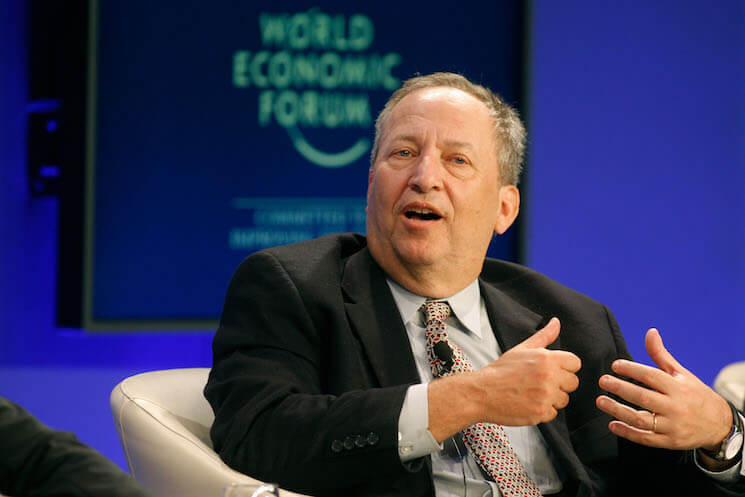International capital flows and secular stagnation

One of the reasons why so many people are interested in determining the natural rate of interest is due to its implications for the secular-stagnation hypothesis. That hypothesis, originally laid out by the late Alvin Hansen at Harvard University in the 1930s and resuscitated by former U.S. Treasury Secretary Larry Summers, argues that economies can get stuck in a state where the natural rate of interest is negative, which then requires central banks to keep interest at or very close to zero percent. There are many aspects to this hypothesis, but one factor that we should keep in mind as the Federal Reserve considers its next interest rate hike is the international aspect—specifically, the role of capital flows potentially aggravating the problems of secular stagnation.
The major effect of a negative natural rate of interest is that the economy ends up vacillating between slow growth characterized by a lack of aggregate demand or an economy growing steadily but propped up by a speculative bubble. International capital flows can have a major role in inflating asset bubbles. Consider the recent outflow of capital from China. At Bloomberg View, Noah Smith details the role of Chinese capital in a potential housing bubble in Canada. Foreign capital flowing into the Canadian real estate market could possibly be convincing other investors that higher housing prices are here to stay. By exporting some of the savings of wealthy Chinese individuals to Canada, the free movement of capital seems to exacerbate one of the problems of secular stagnation.
At the same time, increased capital flows into a country pushes down interest rates. For a given demand for loanable funds, an increase in the supply of savings will push down interest rates. The potential for secular stagnation to be transmitted via capital flows is a concern discussed in a working paper by economists Gauti B. Eggertsson and Neil R. Mehrotra of Brown University and Larry Summers. The paper emphasizes how today’s integrated international capital markets can cause problems for central banks. When the Federal Reserve, for example, looks to raise interest rates it needs to consider whether other economies are experiencing slowdowns or are experiencing political instability, which the three co-authors caution could result in increased capital flows to the United States. They note that such capital inflows could put further downward pressure on the natural rate of interest in the United States, making it hard for the Federal Reserve to continue to raise rates as the rate consistent with a stable growing economy declines.
In the model examining these capital flows, Eggertsoon, Mehrotra, and Summers show that increased capital controls, or restrictions on capital flows, could help alleviate the problems of secular stagnation. This is part of a reconsideration of capital controls that were once thought to be a bad move on the part of policymakers. But even if policymakers aren’t willing to go that far, the role of capital flows is a good reason to consider the health of global economy when considering macroeconomic policy at home. The Federal Reserve might have to fight off a cold if the rest of the world sneezes.
